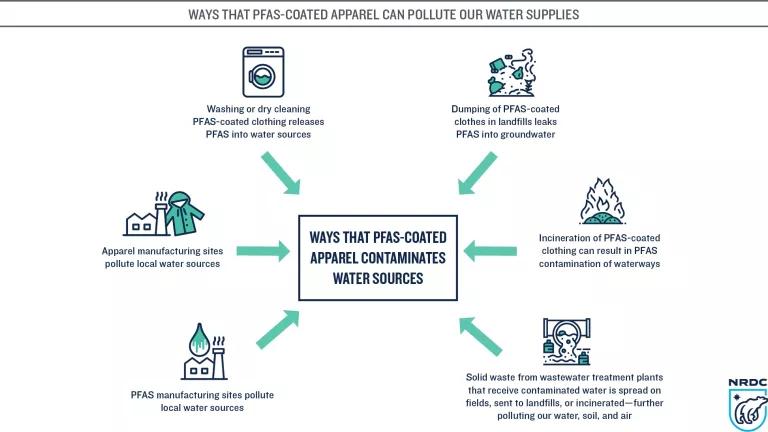We Don’t Need Toxic “Forever” PFAS Chemicals in Our Clothes
AB 1817 by Assemblymember Ting would phase out PFAS in clothing and textiles sold in California.

UPDATE: On August 29, 2022, the Senate passed AB 1817 (Ting), 28-8, and today the Assembly concurred 43-0. The bill now moves to the Governor. The bill is widely supported by Californians.
UPDATE: On May 23, 2022, California's Safer Clothes and Textiles Act, AB 1817 (Ting), passed the Assembly floor, 52-2. The bill now moves to the Senate.
UPDATE: On March 22, 2022, California bill AB 1817, the Safer Clothes and Textiles Act, passed the Assembly Committee on Environmental Safety and Toxic Materials in March and is expected to come up for a vote on the Assembly Floor soon. We encourage Californians to contact their Assembly Members.
PFAS are a class of chemicals that are harmful to health and the environment, and they should be eliminated from the products that come into our homes and workplaces whenever possible, especially when the products spend significant times on our bodies and in our spaces. Clothes and textiles are one such example of a major and unnecessary use of PFAS, used to provide stain and water resistance. That’s not worth the risk of cancer or kidney or liver damage or interference with vaccine uptake or the myriad other serious health risks PFAS are associated with—that’s why AB 1817 by Assemblymember Ting to phase out PFAS in clothing and textiles is such an important bill. NRDC, Breast Cancer Prevention Partners, and Clean Water Action are sponsoring the bill.
PFAS are called “forever” chemicals because they are extremely resistant to breakdown and therefore stick around in the environment for a long time. They move around easily through the environment, making them difficult to control. They also accumulate in the environment and our bodies. Virtually all Americans and Californians have PFAS in their bodies. PFAS are released into the environment when products containing them, including clothes and textiles, are manufactured, used, cleaned, and disposed of. Californians are exposed to them when they work with PFAS or PFAS-containing products, use PFAS-containing products in their homes, consume food and beverages stored in PFAS-containing packaging, drink PFAS-contaminated water, and breathe PFAS pollution in the air. In California, water systems serving up to 16 million people have already been found to have PFAS contamination, and contamination is more prevalent in disadvantaged communities.
And just because PFAS are used somewhere else in the world does not mean that we won’t be exposed to them. A recent article highlights how PFAS cycle through ground, air, and water and how PFAS in the ocean can result in significant air pollution when waves crash on the shore. PFAS used in manufacturing clothes in Asia are all too relevant to a state with a coastline as long as ours.
What makes the use of PFAS in clothing and textiles particularly troubling is that it is not necessary. (The bill does not cover PFAS in personal protective equipment (PPE) used for life-threatening situations like fire-fighting where widely available alternatives do not yet exist; further funding and research are needed to develop PFAS-free PPE and protect firefighters.) For the vast majority of products PFAS’ functionality is simply not needed or provides minimal additional value given the potential harm. Soap and water work well to address most situations where stain repellency is concerned. In addition, PFAS’ toxicity and persistence makes their use unjustifiable to address stains or moisture in the vast majority of circumstances—stains or moisture are generally not life-threatening—especially when alternatives (including different design and clean up options) exist for a great majority of the stain-repellency and water-proofing needs in textiles.
This is demonstrated by the many leading brands in the clothing and textile sectors covered by the bill— brands like Levi’s, Gap, H&M, Puma, Keen, Osprey, Patagonia, Jack Wolfskin, Ikea, and Zara—that have either eliminated or made commitments to eliminate PFAS in their products. It’s time for a law that requires the rest of the industry to phase out PFAS as well, just as California has required the elimination of PFAS in paper-based food packaging, children’s products, and fire-fighting foam, to protect our health and drinking water.




